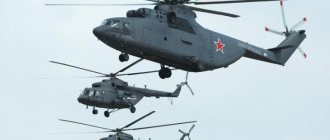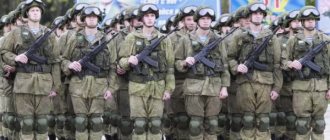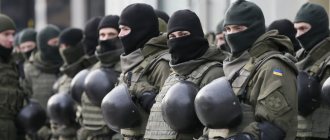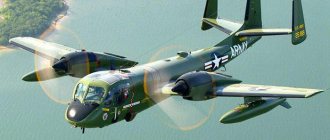History of Russian long-range aviation
A little over a hundred years ago, under Tsar Nicholas II, an air squadron was created, which consisted of the progenitors of modern aircraft - the Ilya Muromets airliners. Despite the fact that the first bombers took to the air in 1923, a military holiday dedicated to long-range aviation was introduced only on December 23, 1999, by order of the Commander-in-Chief of the Russian Air Force.
The Ilya Muromets is an S-22 designed by Sikorsky. The first aircraft came off the assembly line of the carriage factory. It was made of wood, had two wings and four engines, that is, it was a biplane. The weight of the car was about five tons. For military operations, the aircraft was equipped with two platforms and machine guns in the space between the chassis and on top of the fuselage.
The first pilot was the aircraft designer Sikorsky himself. After six months of test flights, the aircraft began to be produced for the army of the Russian Empire. Only an officer could obtain permission to take the helm. Moreover, the on-board mechanic also had to hold the rank of officer.
Since 1914, all Muromets were equipped with the latest engines with greater power, in addition to machine guns, bomb holders, a bomb sight and six seats for the crew appeared. These were the first type B bombers of Russian long-range aviation. The same machine set a flight duration record of 6 hours 30 minutes.
Tu-160
| Tu-160 | |
| Board number | Name |
| 01 | "Mikhail Gromov" |
| 02 | "Vasily Reshetnikov" |
| 03 | "Pavel Taran" |
| 04 | "Ivan Yarygin" |
| 05 | "Alexander Golovanov" |
| 06 | "Ilya Muromets" |
| 07 | "Alexander Molodchiy" |
| 08 | "Vitaly Kopylov" |
| 10 | "Nikolai Kuznetsov" |
| 11 | "Vasily Senko" |
| 12 | "Alexander Novikov" |
| 14 (2) | "Igor Sikorsky" |
| 15 | "Vladimir Sudets" |
| 16 | "Alexey Plokhov" |
| 17 | "Valery Chkalov" |
| 18 | "Andrey Tupolev" |
| 19 (previously 87) | "Valentin Bliznyuk" |
| 21 | "General Ermolov" |
| "Boris Veremey" | |
Russian aviation in the First World War
The squadron was formed from a large staff of pilots and ground support personnel. M. Shidlovsky became the commander of long-range aviation of that time. Repair and mechanical barns and warehouses were built, their own communications units, a meteorological service, a flight school (which was equipped with special training aircraft), and special anti-aircraft artillery was created.
During the First World War, manned groups lost only one Muromets unit and flew about four hundred reconnaissance missions.
In 1916, the S-22 was again upgraded to type E. Thus, the new aircraft weighed more than seven tons and was equipped with eight firing points - shelling could be carried out from all sides of the aircraft.
1917 - creation of the next modification of the Ilya Muromets - Zh. However, after the February revolution, all plans to build 120 heavy bombers failed. The destruction of the squadron continued with the removal from office of Shidlovsky, who was declared a monarchist.
When the troops of the Russian Empire began to retreat from Vinnitsa in the fall of 1917, they decided to burn the “Murom residents” so that the enemy would not capture them. The S-22 performed its last combat flight in 1920 on November 21, after which the use of the aircraft was limited to passenger and postal transportation.
Russian hero "Ilya Muromets"
The world's first heavy four-engine bomber S-22 "Ilya Muromets" received the name of the legendary Russian hero for a reason. Its predecessor - the world's first four-engine aircraft - was called more abstractly - “Russian Knight”. According to some reports, the creator of these heavy machines, the famous Russian and then American aircraft designer Igor Sikorsky, planned to build a whole series of heavy aircraft, each of which would bear the name of the epic hero.
Photo: Wikimedia
From the very beginning, the “Russian Knight” was created as a long-range military reconnaissance aircraft. But his successor became the world's first passenger airliner. It received the first passenger compartment in the history of aviation, separated from the pilot’s cabin, designed to accommodate one and a half dozen people. This salon not only had glazing and sleeping rooms, but even a bathroom with a toilet and heating, which was powered by engine exhaust gases.
The plane even had doors to exit from the cabin to the surface of the lower wings, where, as expected, passengers could, if desired, ventilate during the flight (then speeds and altitudes made it possible to do this almost without risk).
The outbreak of the First World War quickly forced aircraft manufacturers to switch to war footing, and instead of passengers, the Ilya Muromets began to carry bombs on board. The first squadron had only four aircraft - by that time they simply did not have time to build more. But in just three years of the war, 76 of them were already produced, of which 60 vehicles entered the troops. They were used until the end of the Civil War. The Ilya Muromets departed on its last combat mission on November 21, 1920. After this, the legendary aircraft returned to its original purpose: in 1921, six of the strongest aircraft began to serve the first postal and passenger line in Soviet Russia, Moscow-Orel-Kharkov, and transported 60 passengers and more than 2 tons of cargo in 43 flights.
Design bureaus of Tupolev and Ilyushin
The 30s of the 20th century went down in the history of the country as a major breakthrough in the development of aircraft manufacturing. For the long-range aviation unit, the design of radically new machines began back in 1927. As a result, the most famous design engineer today, A. Tupolev, created his creations TB-1, TB-3 and TB-4, which were put into further mass production. The bombers were heavyweights, made from solid pieces of metal, the chassis was converted into ski gear. The Soviet Union came out on top in the quality of twin-engine bombers.
Few people know, but the TB-4 (or ANT-20) bomber was also designed as a cargo-passenger aircraft. It was named “Maxim Gorky” and the first pilot was the famous long-range aviation pilot M. Gromov. Being a world record holder in lifting a fifteen-ton cargo to a height of five kilometers, the plane “lived” for only about a year. The airliner collapsed in front of the public after a mid-air collision during a demonstration flight in 1935.
The next development for long-range aviation was truly phenomenal. The year was 1932, P. Sukhoi, guided by the instructions of A. Tupolev, was developing a low-glider aircraft with a single engine. It was also all-metal. It was on it that one of the best pilots, Valery Chkalov, set a world flight range record. The pilot flew from Moscow on an ANT-25 through the North Pole and reached the Pacific coast in California. The mileage of the route was 10,140.
In the same 30s, simultaneously with the developments of A. Tupolev, the Main Directorate of Aviation Industry brought together all the eminent aircraft designers of the Union under one roof of the Central Design Bureau. S. Ilyushin was invited to lead. Along with the design of the TB-4, in 1935 a completely new type of bomber was produced - the DB-3. After a year of successful testing, aircraft of this type began to enter service with the Air Force.
1938 - development of IL-4. Ilyushin created what many other countries could not cope with - the first attack aircraft. The vehicle, with improved engine power and an improved combat kit, participated in both the Finnish War and the Second World War. The total number of IL-4s produced is 1,528 aircraft.
"Diplomatic bomber" Pe-8
Since Soviet bombers at the beginning of the war had the greatest flight range (at that time only the American B-17 Flying Fortresses had a comparable range), it was one of our winged aircraft that had the honor of carrying out a secret mission in 1942: to deliver the People's Commissar for Foreign Affairs Vyacheslav Molotov to negotiations to London and then to Washington and back. The crew of the bomber with tail number 42066 was commanded by Major Endel Pusep, an Estonian, one of the participants in the raid on Berlin on August 10, 1941.
Photo: Wikimedia
Preparations for the diplomatic flight were so secret that German intelligence learned about it only after Vyacheslav Molotov completed the mission assigned to him, forcing Great Britain and the United States to sign agreements on mutual assistance in the fight against Germany and its allies. Therefore, the flight to the West was relatively safe - as safe as a flight over a combat zone can be.
The only element of comfort that the designers were able to provide for the minister and his entourage was a special compartment equipped with oxygen equipment for six people in the fuselage of the aircraft.
Minister Molotov was dressed in the same way as the entire crew - in a fur overalls, a helmet and high boots. As he himself later said, on board he ceased to be “the second person in the country”
The Pe-8, which took off from Moscow, flew over the Baltic and North Seas and landed in Northern Scotland on May 19, from where the head of the People's Commissariat of Foreign Affairs was taken to London. After 9 days, the Pe-8 was already in Washington, from where on June 12 Molotov, having once again visited London, returned to Moscow.
It is noteworthy that Soviet and Western newspapers reported the signing of an important document while the “diplomatic bomber” was still in England. In Berlin, they immediately gave the order to destroy the Pe-8 with Molotov on board at any cost, but the Luftwaffe pilots were unable to carry out this order.
Aviation during the Second World War
Long-range aviation began to carry out its strategic and operational-tactical tasks from the first day of the declaration of the Great Patriotic War, from June 22, 1941. The IL-4 became the main bomber. From DB-3, Pe-2 and Pe-8 aircraft, the crews dropped bombs on the heads of the Germans in the European cities they captured, Warsaw, Bucharest, and Koenigsberg.
Not a single major operation of the Red Army was complete without long-range aviation sorties. A year after the start of the war, 8 long-range aviation divisions were formed in the army. There were 340 bombers with 365 crews.
During the years of hostilities, almost 260 pilots received the title of Hero of the Soviet Union.
The post-war situation brought the long-range aviation fleet into crisis - the aircraft became outdated and were written off. Therefore, in 1947, it was decided, with the help of the Tupolev bureau, to create new, powerful and heavy Tu-4. It was a copy of the American B-29 bomber. The aircraft was adapted to the request of the Soviet leadership. In 1951, a newly made copy of the Tu-4 became the first carrier of nuclear weapons.
Links[edit]
- "The Origin and Development of Deep Combat Theory". www.2fj.ru.
_ Retrieved August 7, 2022. - "Organizational structure of the Red Army Air Force". Allaces.ru
. 2016. Retrieved June 3, 2016. - Jump up
↑ Bergström, Christer (2007).
Stalingrad - Air battle: from 1942 to January 1943
. Chevron Publishing Limited. ISBN 978-1-85780-276-4. - ↑
Golovanov (2004), p. 265. - ↑
Golovanov, Alexander Evgenievich (2007).
Long-Range Bomber: Memoirs of the Air Chief Marshal 1941–1945 .
[
Long-Range Bombers: Memoirs of an Air Chief Marshal 1941–1945.
]. Moscow: Tsentrpoligraf. pp. 546, 591. ISBN 978-5-9524-3033-4. - "Tallinn remembers victims of March 1944 bombing". Eesti Rahvusringhääling
. - Zolotarev, Vladimir A. (1999). Great Otečestvennaja: Stavka VGK-Documents and materials 1944-1945
[
Great Patriotic War: High Command Documents and materials 1944-1945
]. Moscow: Terra. item 368. ISBN 5-300-01162-2. - "Air armies" [Air armies]. Allaces.ru
. 2016. Retrieved June 3, 2016. - Holm, Michael (2014). "51st Guards Heavy Bomber Aviation Corps". ww2.dk.
_ Retrieved June 3, 2016. - Holm, Michael (2014). "70th Guards Heavy Bomber Aviation Corps". ww2.dk.
_ Retrieved June 3, 2016. - "Air Power Analysis: Russian Federation". International Aviation Review
.
Publishing house AIRtime. 13
(Summer 2004): 80. - ^ ab Soviet developments in strategic weapons, manuscript available on Yahoo Group TO&E
- “The 37th Air Army of the Russian Air Force bombed Pem-Boy” [The 37th Air Army of Russia bombed Pem-Boy]. Aviaport.ru
. March 29, 2005. Retrieved June 3, 2016. - Holm, Michael (2011). "Aviation Corps". ww2.dk.
_ Retrieved June 3, 2016. - Felgenhauer, Pavel (28 July 2008). "Strategic Target Mustache". New Newspaper
. Archived from the original on July 22, 2012. Retrieved June 3, 2016. - Holm, Michael (2011). "46th Red Banner Air Army of the Supreme High Command SN". ww2.dk.
_ Retrieved June 3, 2016. - SSM manuscript from Yahoo TO&E group
- https://www.realcleardefense.com/articles/2020/03/24/russias_modernization_programs_for_strategic_nuclear_bombers_115141.html
- https://www.flightglobal.com/fixed-wing/russia-starts-building-first-stealth-bomber-state-media/138569.article
- https://www.gfsis.org/maps/russian-m military-
forces - https://russianforces.org/aviation/
- https://www.gfsis.org/maps/russian-m military-
forces - https://rusi.org/commentary/tehran-expels-russian-bombers-iran?page=3
- https://www.gfsis.org/maps/russian-m military-
forces - https://www.realcleardefense.com/articles/2020/03/24/russias_modernization_programs_for_strategic_nuclear_bombers_115141.html
- Nicholas Myers, Russian Aerospace Forces
p. 98 https://wsb.edu.pl/container/Wydawnictwo/Security%20Forum/1-2018/8.pdf - ^ ab "Ukraine scraps Tu-22M3". Defense-ua.com
. - “On January 27, the final stage of the program of heavy bombers of the Tu-22M3 type and aircraft missiles of the X-22 type will take place in Poltava” [On January 27, the final stage of the elimination of heavy bombers of Tu-22M3 aircraft and X-22 missiles will take place in Poltava]. Ukrainian government portal
. January 26, 2006. Retrieved June 3, 2016. - Military balance
. London: International Institute for Strategic Studies. 2002 - ^ a b Aviation and time
. 1996, No. 5, p. 28–36. - Holm, Michael (2016). "Red Banner Black Sea Fleet". ww2.dk.
_ Retrieved June 3, 2016. - “Ukraine cut down 30 Tu-22 bombers with American money” [Ukraine cut down 30 Tu-22 with US money]. Lenta.ru
. March 29, 2004. Retrieved June 3, 2016.
Leaps in aircraft manufacturing
The mid-50s raised Soviet military aircraft production to a new level. The Badger or Tu-16 was created - a qualitatively new monoplane, which had a swept wing clearly located in the center of the body. The first production was made in Kazan, in October 1953. The Tu-16 was operated by 6 people. Military armament consisted of turret-mounted remote installations, a bow cannon mount (PU-88) and a 23-mm AM23.
Another brainchild of Tupolev is the turboprop four-engine strategic missile-carrying bomber “Bear” (Tu-95). The total combat load was 12,000 kg. There are still no analogues to these engines in the world - they are considered the most powerful.
56-60s - creation of ZM. The main difference from other strategic bombers is the presence of a new weapon system - the D5 cruise missile. It was created to destroy heavily protected sea and land targets. Its range is 270 km, and its speed is three times faster than sound.
Tu-95MS
| Tu-95MS | |
| Board number | Name |
| 01 | "Irkutsk" |
| 02 | "Mozdok" |
| 04 | "Mound" |
| 08 | "Smolensk" |
| 10 | "Saratov" |
| 11 | "Vorkuta" |
| 12 | "Moscow" |
| 14 | "Voronezh" |
| 15 | "Kaluga" |
| 16 | "Velikiy Novgorod" |
| 19 | "Krasnoyarsk" |
| 20 | "Dubna" |
| 21 | "Samara" |
| 22 | "Kozelsk" |
| 23 | "Tambov" |
| 27 | "Izborsk" |
| 28 | "Sevastopol" |
| 53 | "Vanino Tu-142M3" |
| 59 | "Blagoveshchensk" |
| "Wedge" | |
| "Orenburg" | |
| "Pskov" | |
| "Ryazan" | |
| "Tver" | |
Aviation development during the Cold War
After the end of World War II, the NATO and Warsaw Pact organizations were the main military-political blocs. The confrontation between the USA and the USSR, according to historians, could turn from the Cold War into the Third World War at any second, so long-range aviation was an excellent nuclear defense for the Union. Soon the long-range aviation was replenished with missile troops, and a missile division was created.
The Cold War period gave impetus to the creation of the K-22 aircraft-missile system based on the Tu-22, which underwent three modifications.
The symbol of the confrontation was the “White Swan” (Tu-160). Its power lay not only in its supersonic speed, but also in its variable wing geometry. The plane first took off in 1981 from the airfield in Ramenskoye. Subsequently, “Swan” entered mass production.
Review of long-range aircraft today
Modern long-range aviation is the basis of the nuclear forces of the Russian Federation. The bases of long-range aviation units are distributed taking into account strategic purpose and efficiency.
The aircraft fleet is represented by:
- Missile carrier Tu-160 - 16 units.
- Tu-95MS missile carrier - 32 units in service and 60 in reserve.
- Missile-bomber Tu-22MZ - about 12.
- Il-78 refueling aircraft - 19 units.
- Tu-22MR reconnaissance aircraft - 150 units.
The aircraft are armed with long-range cruise missiles, nuclear and conventional missiles with operational-tactical missions, and bombs of various calibers.
The military patrol controls the space of Iceland, the Norwegian Sea, the North Pole, the Aleutian Islands, and the eastern coast of South America.
Strengths and weaknesses of the aviation component of Russia's strategic nuclear forces
Russia's strategic nuclear forces today consist of the so-called nuclear triad, which includes the Strategic Missile Forces with their silo-based and mobile-based intercontinental ballistic missiles (ICBMs), strategic naval forces in the Navy with nuclear submarines, ICBM carriers sea-based, and strategic aviation as part of the Russian Air Force. As of September 1, 2022, based on the official statement of the Russian Ministry of Foreign Affairs, the strategic nuclear forces of the Russian Federation have 517 deployed strategic nuclear weapons carriers equipped with 1,420 nuclear warheads. The total number of deployed and non-deployed nuclear weapons carriers is 775 units.
It is worth noting that, according to the START III treaty, each deployed strategic bomber is counted as a carrier with one nuclear warhead. At the same time, the number of cruise missiles with nuclear warheads and nuclear bombs that deployed strategic bombers can carry is not taken into account. In our country, all strategic bombers are part of Long-Range Aviation, an association of the Russian Air Force subordinate to the Commander-in-Chief of the Aerospace Forces. It can be noted that Long-Range Aviation has unique properties; being part of the country’s strategic nuclear forces, it, unlike the Strategic Missile Forces or strategic missile submarines in the Navy, can be used quite effectively in conventional military conflicts. This feature can be explained quite simply; strategic bombers can carry both nuclear and conventional weapons on board. Today, the Long-Range Aviation of the Russian Air Force is armed with strategic bombers Tu-160 (10 Tu-160 + 6 Tu-160M) and Tu-95MS (46 Tu-95MS and 14 Tu-95MSM), as well as long-range missile-carrying bombers Tu-22M3 ( 61 + 1 Tu-22M3M). Here and further to the section “Combat composition of the Russian Long-Range Aviation,” data on the number of aircraft are given from the annual directory The Military Balance 2022, prepared by the International Institute for Strategic Studies (IISS).
Russian strategic aviation and competitors
Modern strategic bombers are very expensive and difficult to manufacture and operate combat systems. Only the Big Three states that have nuclear weapons have such aircraft. Besides Russia, only the US and Chinese Air Forces have their own strategic bombers. At the same time, the only Chinese strategic bomber Xian H-6 was originally a copy of the currently very outdated Soviet heavy jet bomber Tu-16. The latest modifications of this Xian H-6K aircraft have since undergone a serious modernization process, but they are still difficult to classify as modern combat vehicles.
In total, the PLA Air Force has about 150 long-range bombers Xian H-6K (about 90) and Xian H-6N/M (about 60), which are carriers of strategic cruise missiles. The most modern modification of the aircraft at the moment is the Xian H-6K bomber. This model made its first flight on January 5, 2007 and was officially put into service in 2011. The aircraft is distinguished by the presence of new Russian-made D-30KP-2 turbofan engines with a thrust of about 118 kN each, a modernized cockpit and enlarged air intakes; the aircraft also abandoned defensive weapons in the form of a 23-mm automatic cannon. The combat load increased to 12,000 kg (on the first Xian H-6 models it was up to 9,000 kg). The combat radius was increased from 1800 to 3000 km. The Chinese Xian H-6K strategic bomber is capable of carrying up to 6 CJ-10A cruise missiles, which are copies of the Soviet X-55 missile.
Xian H-6K
China is currently working on creating an analogue of the Russian Kh-101 cruise missile. At the same time, the Chinese “strategists” also have conventional weapons in their arsenal, for example, quite effective anti-ship missiles, which can pose a danger primarily to US aircraft carrier groups. At the same time, in the fall of 2022, Chinese media reported that the PRC was developing a new generation strategic bomber, which would become an analogue of the American B-2 strategic bomber. It is known that the new stealth strategic bomber Xian H-20 is being developed by the Xi'an Aviation Industry Corporation. The vehicle should be presented to the public in November 2022 at an event dedicated to the 70th anniversary of the Chinese Air Force. Judging by the available data, the Xian H-20, like the American B-2, is designed according to the “flying wing” design. The characteristics of the new product are kept secret. It is assumed that the aircraft could be in service with the PLA Air Force by 2025, gradually replacing the outdated Xian H-6. Considering China's success in creating a fifth-generation fighter and the general level of economic and industrial development, there is no reason to doubt the reality of the announced plans. Most likely, the Chinese new product will appear earlier than its Russian counterpart - PAK DA.
When flying combat sorties to their maximum (intercontinental) flight range (several thousand kilometers), strategic bombers, precisely because of their range, become vulnerable to attacks by enemy fighters. Also, the long range makes it difficult to organize fighter cover with your own aircraft. At the same time, these huge aircraft are also vulnerable against modern air defense systems and fighter cover cannot protect them from anti-aircraft missiles. There can be three ways out of the situation. All three are sold only in the USA. For example, the slow-moving and huge B-52 strategic bomber, the youngest of which will soon turn 60 years old, is a carrier of air-launched cruise missiles that can be used before entering the enemy’s air defense zone (Russian “strategists” can also be used) . The American B-1 strategic bomber uses a combination of stealth and the ability to perform long flights at low altitudes, while the B-2 strategic bomber, made using stealth technology, is difficult to detect even with the use of modern radars. This bomber is able to reach the target at high altitude. Both the B-1 and B-2 bombers must deliver short-range missiles and bombs as close to the target as possible.
The development of the concept laid down in the B-2 should be the new American strategic bomber B-21 “Ryder”; in the future it should replace all three previous types of American “strategists”. Currently, the US Air Force operates 20 Northrop B-2A Spirit strategic bombers, 61 Rockwell B-1B Lancers and 70 Boeing B-52 Stratofortresses, for a total of 151 aircraft. They are planned to be replaced by about a hundred B-21 bombers.
The Americans have actively used and continue to use their strategic bombers in various local wars. The only military experience of using Russian Tu-95 and Tu-160 was the combat operation of the Russian Aerospace Forces in Syria; China has never used its Xian H-6K strategic bombers in military conflicts. The experience of using “strategists” in local wars shows that their huge combat load makes it possible to use such aircraft as super-bombers capable of dropping tens of tons of bombs on enemy troops and ground targets in one flight. One strategic bomber can replace up to 10 conventional front-line (tactical) aircraft. True, such an option for their use can only be implemented if the enemy’s air defense is completely suppressed, or if the enemy completely lacks a full-fledged air defense system.
Northrop B-2A Spirit
Russia currently does not have an “analogue” of the American B-2 bomber; it can only become the PAK DA project, if it is implemented in practice. At the same time, our old-timer, the Tu-95MS, can easily be called an analogue of the B-52 - a low-speed, huge aircraft capable of carrying from 6 to 16 air-launched cruise missiles (the flight range of such missiles equipped with a nuclear warhead reaches 3,500 kilometers). Another Russian strategic bomber, the Tu-160, is similar in appearance to the American B-1; it is also capable of low-altitude flights and has low visibility. At the same time, the “American” has a low supersonic speed (Mach 1.2), while the Tu-160 is able to fly at speeds up to Mach 2.1. In addition, the B-1 is deprived of the ability to carry cruise missiles, and the Tu-160 can carry up to 12 X-55 missiles. At the same time, both Russian “strategists” are able to use non-nuclear cruise missiles Kh-555 and Kh-101, which have already been successfully used in Syria, as well as conventional bombs (up to 40 tons on the Tu-160 and up to 21 tons on the Tu-95MS).
In addition to the classic strategic bombers Tu-95MS and Tu-160, the Long-Range Aviation of the Russian Air Force is armed with supersonic missile-carrying bombers Tu-22M3, which at the moment can be classified as the only medium-range bombers in the world. This aircraft can carry X-22 supersonic anti-ship missiles (ASMs), designed to destroy large enemy surface ships, its main target being aircraft carriers, or up to 24 tons of conventional aircraft bombs. The normal combat load of this aircraft is 12 tons, the combat radius with such a load ranges from 1,500 to 2,400 kilometers, depending on the profile and speed of the flight. This allows the Tu-22M3, operating from Russian territory, to reach almost any point in Eurasia or North Africa.
Currently, Russia is implementing a program to modernize the Tu-160 bomber to the Tu-160M2 version. Thanks to the updated engines, the aircraft will be able to increase its flight range by a thousand kilometers, which will increase its efficiency by about 10 percent. In addition, Tu-160M2 aircraft will receive new avionics, electronic warfare systems, control equipment, and new weapons control systems. As the American publication The National Interest notes: “Unlike the American B-2 Spirit strategic bombers and even the promising B-21 Ryder, Russian “strategists” are designed to hit ground targets while inside tightly closed airspace, using winged long-range missiles." American experts believe that Tu-160M2 bombers will receive stealth cruise missiles of a new generation, as Russian Deputy Defense Minister Yuri Borisov previously said. According to him, these new missiles will surpass the existing X-55, X-555 and even X-101.
Combat composition of the Russian Long-Range Aviation
As Alexander Anatolyevich Khramchikhin, deputy director of the Institute of Political and Military Analysis, notes in the article “Air Strategists” in the Independent Military Review, today the strategic bombers of Russian Long-Range Aviation are part of two heavy bomber aviation divisions. The 22nd division is stationed in the Saratov region in the city of Engels. It is armed with all 16 Tu-160 bombers in service, including 6-7 aircraft that have been upgraded to the Tu-160M version, as well as 14 Tu-95MS turboprop bombers, including 7-8 aircraft that have been upgraded to version of Tu-95MSM. The second heavy bomber division - the 326th - is stationed in the Amur region in the village of Ukrainka. There are 28-29 Tu-95MS bombers in service here, including 1-2 modernized Tu-95MSM.
Tu-95MS next to the B-52H Stratofortress, Barksdale Air Force Base, USA, May 1, 1992
Tu-22M3 long-range bombers are part of two heavy bomber aviation regiments. The 52nd regiment is stationed in the Kaluga region at the Shaikovka airfield. It is armed with 17 Tu-22M3 aircraft, of which three aircraft are equipped with the specialized SVP-24 “Hephaestus” computer system, which allows the use of conventional aircraft bombs with an efficiency close to high-precision weapons. The 200th regiment is stationed in the Irkutsk region at the Belaya airfield, and consists of 17 to 24 Tu-22M3 bombers, including 1-2 vehicles with the SVP-24 Hephaestus system. In addition, the 40th mixed aviation regiment in the Murmansk region at the Olenya airfield has two more Tu-22M3 bombers.
The 43rd center for combat use and retraining of flight personnel of the Russian Air Force's Long-Range Aviation is located at the Dyagilevo airfield near Ryazan. The center is armed with up to 5-9 Tu-22M3 bombers (including 2-3 vehicles with Hephaestus) and up to 7-8 Tu-95MS bombers. Three more Tu-22M3 long-range bombers are at the disposal of other training centers of the Russian Aerospace Forces, not related to Long-Range Aviation. Two or three Tu-160 strategic bombers are at the disposal of the Gromov Flight Research Institute in Zhukovsky near Moscow, but these aircraft are not considered combat units. Up to 150 Tu-22M3 aircraft are in storage.
Long-Range Aviation includes two more aviation regiments. Including the 27th mixed regiment, which is stationed in Tambov. The regiment is armed with 20 Tu-134UBL training aircraft, as well as 8 transport vehicles. The 203rd Aviation Regiment, located in Dyaghilevo, is armed with 18 Il-78 tanker aircraft, including 13 Il-78M. These are the only refueling aircraft that the Russian Aerospace Forces currently have. Such a small number of such aircraft is the weak spot of the entire Russian military aviation. By comparison, the US Air Force currently operates 458 refueling aircraft (with an additional 175 in storage), and the Naval Air Force operates an additional 77 refueling aircraft (38 in storage). All American refueling aircraft constantly service and support flights of strategic, tactical, transport and carrier-based aircraft. At the same time, Russian refueling aircraft are able to seriously serve exclusively strategic aviation, while front-line aircraft have almost no chance of realizing their in-flight refueling capabilities. The reason is trivial - there is an insufficient number of IL-78s in the Aerospace Forces, while there are no prospects for correcting the current situation in the foreseeable future. This problem is also typical for the PLA Air Force; Chinese aviation has a total of 13 Xian H-6U/DU tanker aircraft and three Il-78.
Tu-160, 2014
Prospects for Long-Range Aviation
In the near future, Russia plans to launch production of the Tu-160M2 strategic bomber. The machine, made in the airframe of the Tu-160 aircraft, will receive completely new on-board equipment and new weapons. The plans include the construction of 50 such strategic bombers, which should partially replace some of the vehicles currently in service. Earlier, Russian President Vladimir Putin already said that the emergence of a new version of the Tu-160 strategic bomber would be a serious step towards strengthening the Russian nuclear triad.
Today we can say that the military conflict in Syria made it possible to evaluate in practice the capabilities of Russian Long-Range Aviation as one of the instruments of the country’s foreign and military policy. The development of Long-Range Aviation will certainly continue, as will the entire nuclear triad. It is planned that the main strategic bomber will be the PAK DA - the Advanced Aviation Complex of Long-Range Aviation, which has been under development in Russia since 2009. However, according to information from open sources, the aircraft, which in conceptual terms is the Russian answer to the B-2, even according to the most optimistic forecasts, will not appear in service until 2028.
The latter circumstance, apparently, is an explanation for the active work on the Tu-160M2 project and the emergence of plans to modernize the existing fleet of Tu-22M3 bombers to the M3M version. According to American experts from The National Interest magazine, the option of upgrading the Tu-160 to the Tu-160M2 version is technically and economically more justified and more effective than a sharp transition to the PAK-DA stealth bomber being developed. The publication's experts note that Moscow will still not abandon the creation of the PAK-DA, however, in the short and medium term, the capabilities of the modernized Tu-160M2 will be sufficient.
Tu-22M3 bombs terrorist targets in Syria
According to Alexander Khramchikhin, this approach of the Russian authorities temporarily improves the situation, but does not completely solve the problem itself. According to him, the experience of other branches of the Russian Armed Forces shows that the modernization of old Soviet weapons is going on in the country much more successfully than the creation of fundamentally new Russian combat systems. In ten years, this could become a very big problem that cannot be solved without “reanimating” the system of science and education in Russia, which is not receiving due attention.
Sources of information: https://nvo.ng.ru/armament/2018-12-06/1_1025_strategy.html https://www.popmech.ru/weapon/news-445822-knr-pokazhet-bombardirovshchik-nevidimku-cherez- god https://www.ntv.ru/novosti/1995940 The Military Balance 2018/International Institute for Strategic Studies Materials from open sources
Long Range Aviation Museum
Russian museums dedicated to long-range aviation are located in Ryazan and Engels. The Ryazan Museum is the oldest; it was created in 1975 in honor of the thirtieth anniversary of the victory in the Second World War. The museum is located in Diaghilev's garrison. Its exposition is represented by military aircraft (Tu-22M2, Tu-95K, Tu-16), various documents and photographs of officers and pilots. Museum address: Ryazan, st. Belyakova, military unit 41521, Long-Range Aviation Museum.
The second Russian long-range aviation museum is located in the Saratov region. Its visitors will be pleasantly surprised that it is located on an active long-range aviation air base. Here you can see real strategic bombers - Tu-160. Moreover, the museum owns a whole collection of cruise missiles and aerial bombs. Museum address: Engels, 1, military unit 42152.
And the largest Air Force museum is the museum in the village of Monino, Moscow region. It is recognized as the largest aviation museum in the world; the collection of aircraft will not leave any visitor indifferent. Plus, several times a year the museum hosts an Open Day, when a ramp is brought to the most interesting exhibits and inspection of the inside of military vehicles is allowed. The collection is rich in both the very first aircraft and the most modern ones. Museum address: Moscow region, Shchelkovsky district, urban settlement. Monino, st. Museum, 1.
The future of long-range aviation
On September 16, 2016, Major General S.I. Kobylash became commander of long-range aviation. Today, the long-range aviation of the Russian Aerospace Forces expects the development from JSC Tupolev of a promising long-range aviation complex for a new generation strategic bomber-missile carrier. The first flight is approximately scheduled for 2022, and entry into service in 2025. Information comes from various sources that the new machine will look like a “flying wing”. The long-range design will reduce the possibility of detection by radars.











